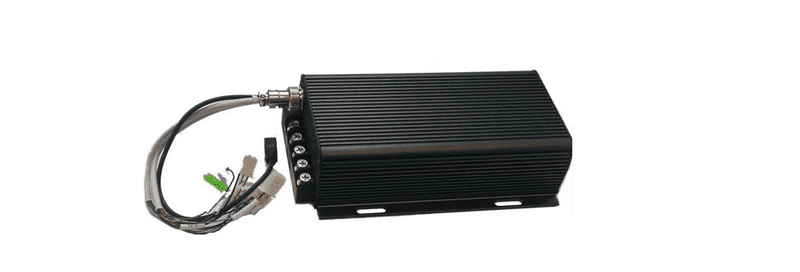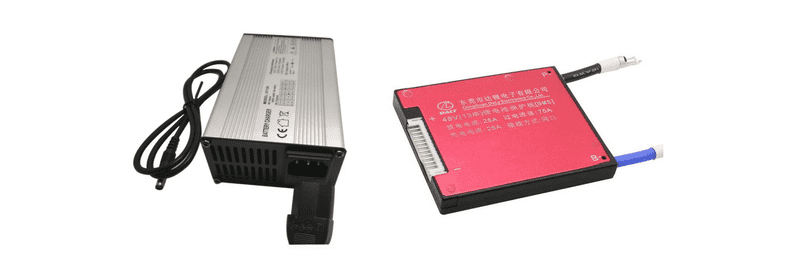How to Convert Your Bike to Electric
If you’re new to e-bikes world and decided to convert your regular trusty bicycle to a modern e-horse, you might need some tips along the way. Quite often people ask questions like ”Can a regular bike be converted to electric?”, ”What e-bike conversion kit is the best?”. In this article, we’ll look at 4 main components of an electric bike: the motor, battery, controller, and BMS. We’ll also discuss which one to choose for your DIY e-bike.
Here is how we would recommend approaching converting your regular bike into an electric bike.
First, you need to decide what you want to get from this project. Each bike implies a specific riding style. Will it be a sports bike? A bike for long-distance riding? A mountain bike? A bike for a quiet ride? There are a lot of various options.
Stage 1: Selecting the motor’s power 💪
Important note! When choosing a motor, pay attention to the laws in force in your country regarding electric bicycles. In many countries, you may encounter restrictions on motor power, speed, and other parameters when driving on the road.
Once you’ve decided on the riding style for your e-bike, you need to choose how much power your bike should have.
Speed is your second nature
If you choose a fast ride with a high speed, then you will need a fairly powerful motor wheel. From our experience, for a sports bike, the minimum is 2 kW. In this case, your bike will have good speed characteristics. Higher wattage wheels also good for climbing or pulling heavy loads.
Want something in-between
If you’re looking for something in the middle, want to be able to drive fast enough, and satisfied with the speed of up to 50 km / h, then motors with a power of 1-2 kW are your choice.
You’re not in a hurry, prefer reliability
For a quiet riding style, power up to 1 kW will be enough. This is the best choice for elderly people. Here you can even choose a 250 W motor, but in this case, keep in mind that if you encounter even small hills on your way, you’d probably need to use pedal assist.
Stage 2: Choosing the motor ⚙️
Based on the required power, you can now decide on which motor to choose.
There are various designs of motors from which you can choose:
- Hub mounted direct drive motor
- Geared hub motor
- Central/Mid drive motor
By and large, it’s a matter of preference.
Each of these motor types has its advantages and drawbacks. Central/mid-drive motor will have a better torque, which can be of use for a powerful mountain electric bike. But because it has a gearbox, bearings, additional chain, it all leads to higher power consumption, which in turn reduces the available range of the bike.
For less powerful configs it doesn’t make so much sense. Direct drive motor gives enough torque and has less energy consumption.
Stage 3: Choosing the controller
Once you’ve selected your motor, you can now select the controller and other necessary parts of your DIY electric bike.
The controller and motor must be clearly matched in terms of power and voltage. There’s no need to buy a more expensive controller if it doesn’t match your motor and battery. That’s why quite often the motor and controller are sold together as a part of an electric bike conversion kit.
There’s a huge variety of electric bike kits out there. You can find anything from cheap and affordable electric bike conversion kits to the most powerful, top-range kits available today.
Stage 4: Choosing the battery and BMS 🔋
Alright, at this stage, we already know the power characteristics of our motor. In our experience, it’s better to buy a battery separately for your configuration.
Quite often the conversion kits offer a certain “average” set of parts, and the battery may not be well suited for your selected configuration.
In order to choose the right battery, we need to determine the energy consumption and the required range.
For a 1 kW motor, the energy consumption will be approximately 10-15 WH / km. For a more dynamic 1-2 kW motor, it will be 10-20 WH / km. Of course, these are approximate numbers. You can ride quietly on a more powerful motor and the consumption will be minimal. It highly depends on your riding style.
A less powerful motor simply will not allow you to drive fast, therefore, its consumption will be no more than 15 WH / km.
If for less powerful motors we can calculate approximate energy consumption, then it is difficult to do for more powerful ones. It all depends on driving dynamics. For example, if you are driving along a hilly path in the forest, then the consumption may be 40 WH / km, and on the highway, it may be 25 WH / km.
Therefore, as an example, we’ll take 40 km / h speed, with the 20 WH / km consumption and 50 km range. Based on this we can select our battery.
So, 20 x 50 = 1000 WH, or 1kW/H. Next, suppose we have a 48 V kit, so 1000 WH / 48 V = approx 20 AH. So we’ll need a 48V, 20 AH battery.
Also, when choosing a battery, you should think in advance about where to mount it on your bike. There are different mounting options: on the frame, on the trunk, some people even mount it on the steering wheel (crazy, huh?).
Along with the battery, you may also need a BMS. Sometimes, when you buy a battery, the seller can additionally offer you a suitable BMS.
Of course, if you are a seasoned e-bike builder, you can separately buy a BMS and a battery and then connect and mount them as needed yourself.
However, if you don’t feel confident enough in yourself, it is better to buy a battery with BMS as a part of a kit.
Once you’ve bought everything you need, all that’s left is to mount it on your bike. It is difficult to give any particular recommendations here, as there are so many different bike configurations.
Final thoughts
Electrically-assisted pedaling is getting more and more popular right now. With the emergence of the new cheap e-bike conversion kits, almost everyone now can make their bike electric.
The most important thing that e-bike conversion gives you is the opportunity at a reasonable cost to get a unique vehicle that 100% meets your requirements!
You also save a pile of cash while making your bike electric. With this DIY approach, you’ll be able to save money for additional accessories like extra saddles, bells, a lock, PowerWatcher, and other useful things.
So, if you’re one of those people that doesn’t afraid to get your hands dirty, definitely give it a go!


